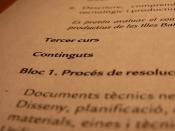IntroductionCurriculum has numerous definitions, which can be slightly confusing. In its broadest sense a curriculum may refer to all courses offered at a school. This is particularly true of schools at the university level, where the diversity of a curriculum might be an attractive point to a potential student.
A curriculum may also refer to a defined and prescribed course of studies, which students must fulfill in order to pass a certain level of education. For example, an elementary school might discuss how its curriculum, or its entire sum of lessons and teachings, is designed to improve national testing scores or help students learn the basics. An individual teacher might also refer to his or her curriculum, meaning all the subjects that will be taught during a school year.
On the other hand, a high school might refer to a curriculum as the courses required in order to receive one's diploma.
They might also refer to curriculum in exactly the same way as the elementary school, and use curriculum to mean both individual courses needed to pass, and the overall offering of courses, which help prepare a student for life after high school.
Usually, students in high school and colleges have some degree of choice in pursuing their education. They often have an individual curriculum which helps them attain a degree or to specialize in a certain field. Even at the high school level, curriculum may be separated into courses that make one eligible to attend certain colleges, and courses that will merely earn students a diploma.
Some high schools have curriculum specially designed for students who plan to work in a trade after finishing high school. In those cases, a high school may offer certification in secretarial or construction skills when a student follows a specific curriculum.
In colleges,


